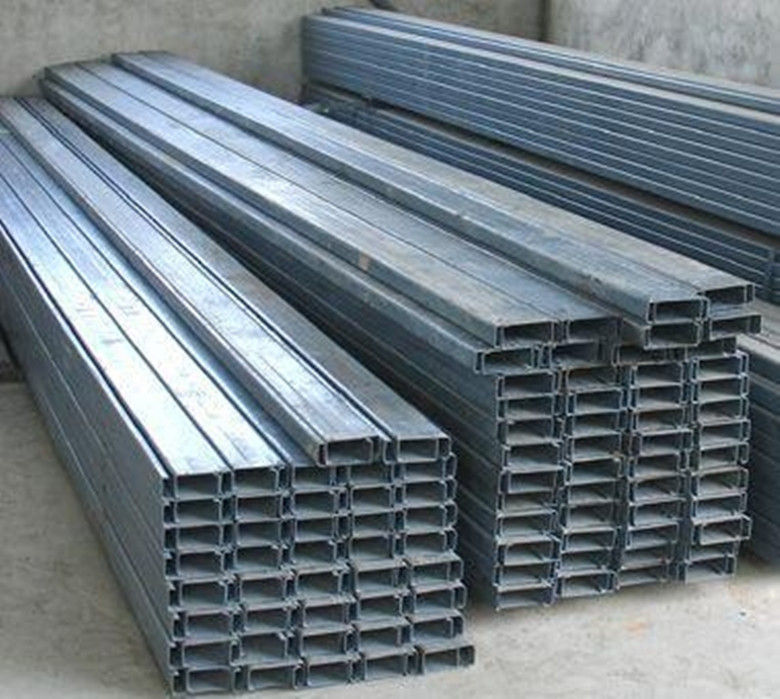Galvanised steel
Contents |
[edit] Introduction
Galvanisation can be used to help prevent steel from corroding. This involves coating steel in zinc. The coating of zinc prevents corrosive substances from reaching the base metal. The zinc also acts as a sacrificial anode, meaning that if the coating is scratched, the remaining zinc will still protect the exposed steel.
The most common method of galvanising steel is hot-dip galvanisation, which involves submerging the steel in a bath of molten zinc.
This form of protection may be insufficient for components exposed to acids such as acid rain, or in a salt environment, such as coastal locations, and for these applications, stainless steel is preferable.
See Stainless steel v galvanised steel for more information.
[edit] Process of galvanisation
The typical process of galvanisation is described below.
[edit] Degreasing
To begin, the steel must be treated and cleaned to remove any scale, rust, oil, paint or other surface contaminants.
[edit] Fluxing
The steel is then immersed in a flux solution. This is usually 30% zinc ammonium chloride with wetting agents, maintained at above 65°C. This helps to prevent further oxidation before the galvanising begins. The steel is then dried.
[edit] Galvanising
The steel is completely immersed in a bath of molten zinc. A uniform coating is produced by the zinc reacting with the steel to form a series of zinc-iron alloy layers. The mass of the steel component being protected will determine the thickness of the layers.
The component is removed from the bath after a period of immersion which varies according to the size and mass. The steel will carry with it an outer layer of molten zinc which solidifies upon cooling to form the outer coating.
Small components such as fasteners can be galvanised by a similar process. They are loaded into perforated cylindrical steel baskets and lowered into the bath. Upon removal, they are rotated at high speeds for 15-20 seconds in a centrifuge which throws off excess zinc and maintains the integrity of the components.
For more, see Galvanising.
[edit] Advantages of galvanised steel
There are several advantages to using galvanised steel:
- It can be more cost-effective than other protective coatings for steel.
- It has good durability and requires little maintenance.
- It has a life expectancy of more than 50 years in rural environments, and 20-25 years in more extreme urban and coastal environments.
- By fully immersing the component in zinc every part is protected, including recesses, sharp corners and inaccessible areas.
- Galvanised coatings are easily assessed by the eye.
[edit] Disadvantages of galvanised steel
Some components may be too large or too small (e.g. small screws and bolts) to be hot-dipped.
The zinc will eventually be corroded; the rate being largely dependent on the thickness of the coating and the environment to which it is exposed.
There is also the risk that the outer zinc layer can scratched, or can peel away if components are cooled too slowly. A very thick coat of zinc can also become brittle and flake off.
[edit] Related articles on Designing Buildings
- Aluminium.
- Cast iron.
- Concrete-steel composite structures.
- Concrete vs. steel.
- Galvanising.
- Major cast metal components.
- Metal fabrication.
- Metal roofing.
- Rust.
- Spangle.
- Stainless steel.
- Stainless steel vs. galvanised steel.
- Structural steelwork.
- Super-strength steel structures.
- Types of metal.
- Types of steel.
- Weathering steel.
Featured articles and news
International Electrician Day, 10 June 2025
Celebrating the role of electrical engineers from André-Marie Amperè, today and for the future.
New guide for clients launched at Houses of Parliament
'There has never been a more important time for clients to step up and ...ask the right questions'
The impact of recycled slate tiles
Innovation across the decades.
EPC changes for existing buildings
Changes and their context as the new RdSAP methodology comes into use from 15 June.
Skills England publishes Sector skills needs assessments
Priority areas relating to the built environment highlighted and described in brief.
BSRIA HVAC Market Watch - May 2025 Edition
Heat Pump Market Outlook: Policy, Performance & Refrigerant Trends for 2025–2028.
Committing to EDI in construction with CIOB
Built Environment professional bodies deepen commitment to EDI with two new signatories: CIAT and CICES.
Government Grenfell progress report at a glance
Line by line recomendation overview, with links to more details.
An engaging and lively review of his professional life.
Sustainable heating for listed buildings
A problem that needs to be approached intelligently.
50th Golden anniversary ECA Edmundson apprentice award
Deadline for entries has been extended to Friday 27 June, so don't miss out!
CIAT at the London Festival of Architecture
Designing for Everyone: Breaking Barriers in Inclusive Architecture.
Mixed reactions to apprenticeship and skills reform 2025
A 'welcome shift' for some and a 'backwards step' for others.
Licensing construction in the UK
As the latest report and proposal to licence builders reaches Parliament.
Building Safety Alliance golden thread guidance
Extensive excel checklist of information with guidance document freely accessible.
Fair Payment Code and other payment initiatives
For fair and late payments, need to work together to add value.
Pre-planning delivery programmes and delay penalties
Proposed for housebuilders in government reform: Speeding Up Build Out.
High street health: converting a building for healthcare uses
The benefits of health centres acting as new anchor sites in the high street.

























